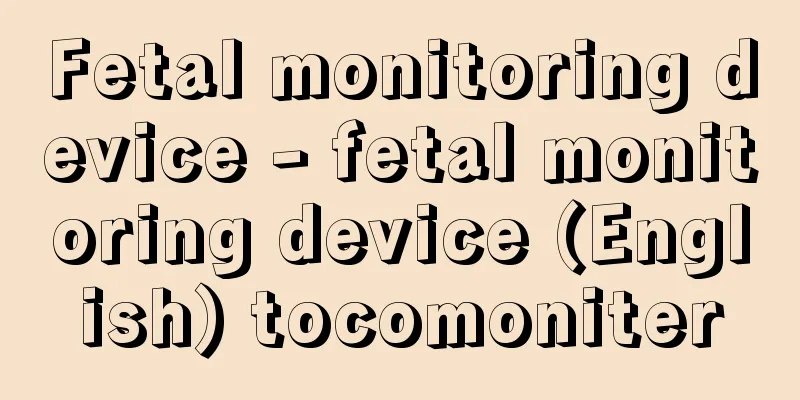Bone marrow transplant

|
◎Method and efficacy of bone marrow transplantation ◎The best time to receive a bone marrow transplant ◎Side effects of bone marrow transplantation ◎ Methods and effectiveness of bone marrow transplantation Bone marrow transplantation is a type of chemotherapy for cancer, and the biggest drawback of this is the side effect of a decrease in white blood cells and platelets. This is because the bone marrow, which is the hematopoietic tissue inside the bones that produces blood components, is damaged by anticancer drugs. This is called myelotoxicity. Bone marrow transplantation is a treatment designed to avoid such disorders, and has shown good results, especially in treating leukemia. There are three methods of bone marrow transplantation: 1. Allogeneic bone marrow transplant When large amounts of anti-cancer drugs are used or when radiation is irradiated to the whole body, normal cells are destroyed as well as cancer cells in the bone marrow. Therefore, allogeneic bone marrow transplantation is a method to first destroy all of the patient's bone marrow cells, and then receive normal bone marrow cells from another person to restore the hematopoietic function. To transplant bone marrow cells, the donor is put under general anesthesia and bone marrow fluid is collected from the hip bone (ilium) and then injected into the patient via an IV drip. The stem cells (cells that differentiate and grow to produce blood cells) in the bone marrow fluid then enter the bloodstream, settle in the bone marrow and begin to proliferate, restoring the ability to produce normal blood cells. During treatment, there will be a period when your white blood cells will run out, and because there is a risk of infection, you will be placed in a sterile room and kept under strict supervision. This allogeneic bone marrow transplant is often used for leukemia and malignant lymphoma, and if treatment is performed early, about 60% of people are cured. Measures against transplant reactions Among the blood components produced by bone marrow cells, white blood cells (lymphocytes and monocytes) have an immune function that attacks foreign substances that enter the body from outside. The lymphocytes produced in the transplanted bone marrow of another person recognize the patient's cell tissue as foreign and attack it, causing a transplant reaction (graft-versus-host disease). In severe cases, it can be fatal. To prevent this, it is important that the lymphocyte types (HLA) match between the patient and donor. The ratio of suitable donors between siblings is one in four, but between unrelated people, the ratio is one in hundreds to tens of thousands, making it difficult to find a donor. For this reason, bone marrow banks have been established and are accepting registrations of donors. ②Autologous bone marrow transplant Autologous bone marrow transplantation involves harvesting the patient's own bone marrow in advance, freezing it, and then returning it to the patient after administering large amounts of chemotherapy and radiation. Because bone marrow from another person is not used, it has the advantage of not causing an immune response and having no side effects. However, since the recurrence rate tends to be high, preventive measures are being researched. Autologous bone marrow transplantation is often used to treat children with neuroblastoma and malignant lymphoma. However, if cancer cells are mixed in with the collected bone marrow cells, there is still a question as to whether they can be completely removed. 3. Peripheral blood stem cell transplantation Bone marrow transplantation is an effective treatment because the bone marrow fluid collected from the bone marrow contains hematopoietic stem cells, which are the source of blood cells such as red blood cells, white blood cells, and platelets. However, since there is a risk of immune reactions occurring with allogeneic bone marrow transplantation and the risk of cancer cells being mixed in with autologous bone marrow transplantation, it would be a great advantage if only stem cells could be extracted and transplanted. On the other hand, peripheral blood (blood flowing through blood vessels) contains mature blood cells and only a small number of stem cells. However, it has been found that the number of stem cells in the blood increases significantly during the bone marrow recovery period after chemotherapy and after administration of hematopoietic factors such as G-CSF. It is now possible to perform autologous peripheral blood stem cell transplantation, in which these stem cells are collected from the patient's peripheral blood in advance, frozen and stored, and then returned to the patient after high-dose chemotherapy. This method does not require a donor or a sterile room. It quickly restores hematopoietic function and has been used successfully in the treatment of malignant lymphoma, breast cancer, and childhood neuroblastoma. In addition, allogeneic peripheral blood stem cell transplantation, in which stem cells are collected from the peripheral blood of another person without the need for anesthesia, is also being attempted. Furthermore, it has been discovered that the umbilical cord, which is cut during birth of a newborn, contains large amounts of stem cells, and methods for utilizing these are being investigated. The best time to undergo a bone marrow transplant is to receive one early in the course of the disease in order to achieve good results with a bone marrow transplant. In acute myeloid leukemia and acute lymphoblastic leukemia, the period in which leukemia cells are reduced with anticancer drugs and symptoms disappear is called the remission period. There is the initial first remission period and the second remission period in which symptoms subside again after a relapse, but bone marrow transplantation during the first remission period is considered to be the most effective. For chronic myeloid leukemia, the most effective treatment is within one year of diagnosis. For malignant lymphoma, there is a high possibility of curing with chemotherapy alone, so if the disease recurs, it is advisable to perform a bone marrow transplant as soon as possible. ◎Side effects of bone marrow transplantsDuring bone marrow transplants, large amounts of anti-cancer drugs and strong radiation are used to kill leukemia cells, so side effects can occur. In addition to symptoms such as nausea, complications such as infections, interstitial pneumonia, hemorrhagic cystitis, and liver damage, as well as graft-versus-host disease, an immune response, can occur. In the past, the older you were, the more likely you were to develop complications, but now, with advances in treatment of side effects and the development of drugs such as G-CSF that increase white blood cells, good treatment outcomes can be achieved up to the age of 45. Source: Shogakukan Home Medical Library Information |
|
◎骨髄移植の方法と効力 ◎骨髄移植を受けるのに適した時期 ◎骨髄移植の副作用 ◎骨髄移植(こつずいいしょく)の方法と効力 ●骨髄移植とは がんの化学療法で、いちばんネックになるのは、白血球(はっけっきゅう)や血小板(けっしょうばん)が減少する副作用が出ることです。これは、骨の内部にあって血液成分をつくり出す造血組織である骨髄が、抗がん剤によって障害されるためです。これを骨髄毒性(こつずいどくせい)といいます。 このような障害を避けるために考えられた治療法が骨髄移植で、とくに白血病の治療によい治療成績があがっています。 骨髄移植には、つぎの3つの方法があります。 ①同種骨髄移植(どうしゅこつずいいしょく) 抗がん剤を大量に使用したり、放射線を全身に照射すると、骨髄のがん細胞とともに正常細胞までも破壊されます。そこで、患者さんの骨髄細胞を全滅させてから、他人の正常な骨髄細胞をもらって造血機能を回復しようとするのが、同種骨髄移植です。 骨髄細胞を移植するには、ドナー(提供者)に全身麻酔(ますい)をかけて腰の骨(腸骨(ちょうこつ))から骨髄液(こつずいえき)を採取し、患者さんに点滴(てんてき)で注入します。すると、骨髄液中の幹細胞(かんさいぼう)(分化・成長して血球をつくり出すもとになる細胞)が血流にのり、骨髄に定着して増殖(ぞうしょく)を始め、正常な血球をつくる能力が回復されるのです。 治療中は、白血球がなくなる時期が続き、感染の危険があるため、無菌室に入って厳重に管理されます。 この同種骨髄移植は、白血病や悪性リンパ腫(しゅ)によく用いられ、早い時期に行なう治療では、約60%の人が治っています。 移植反応(いしょくはんのう)の対策 骨髄細胞のつくり出す血液成分のうち、白血球(リンパ球や単球)には体外から入ってきた異物を攻撃するという免疫(めんえき)作用があります。移植された他人の骨髄でつくられたリンパ球は、患者さんの細胞組織を異物と認めて攻撃するため、移植反応(移植片対宿主病(いしょくへんたいしゅくしゅびょう))がおこります。重症の場合は死亡することもあります。 これを防止するために、患者さんとドナーの間で、リンパ球の型(HLA)が合うことが重要です。 この適合ドナーは、兄弟の間では4分の1の割合ですが、血縁関係のない他人同士では何百人から何万人に1人の割合になり、ドナーを見つけるのは困難な現状です。そのため、骨髄バンクが開設され、ドナーの登録を受け付けています。 ②自家骨髄移植(じかこつずいいしょく) あらかじめ患者さん自身の骨髄を採取し、冷凍保存しておいて、大量の抗がん剤投与や放射線照射の後、体内に戻す方法が、自家骨髄移植です。 他人の骨髄を使用しないので、免疫反応がおこらず、副作用のない利点がありますが、再発率が高くなる傾向があるので、予防策が研究されています。 自家骨髄移植は、子どもの神経芽細胞腫(しんけいがさいぼうしゅ)や悪性リンパ腫の治療によく用いられます。ただ、採取した骨髄細胞の中に、もし、がん細胞がまじっているような場合、完全に取り除けるのかという問題も残されています。 ③末梢血幹細胞移植(まっしょうけつかんさいぼういしょく) 骨髄移植が有効な治療法であるのは、骨髄から採取した骨髄液に赤血球(せっけっきゅう)、白血球、血小板などの血球をつくり出すもとになる造血(ぞうけつ)幹細胞があるからです。しかし、同種骨髄移植では免疫反応がみられたり、自家骨髄移植ではがん細胞が混入している危険性があるので、幹細胞だけを抽出(ちゅうしゅつ)して移植できれば、大きな利点になります。 一方、末梢血(血管を流れる血液)には、成熟した血球が流れていて、幹細胞はわずかしか含まれていません。 ところが、化学療法後の骨髄回復期や、G‐CSFなどの造血因子を投与した後には、血中の幹細胞が大幅に増加することがわかってきました。この幹細胞を、あらかじめ患者さんの末梢血から採取して冷凍保存しておき、大量化学療法後に戻す自家末梢血幹細胞移植(じかまっしょうけつかんさいぼういしょく)が行なえるようになりました。 この方法では、ドナーや無菌室を必要としません。造血機能の回復も早く、悪性リンパ腫、乳がん、子どもの神経芽細胞腫などに実績があがっています。 また、他人の末梢血から、麻酔をすることもなく幹細胞を採取する、同種末梢血幹細胞移植(どうしゅまっしょうけつかんさいぼういしょく)も試みられています。 さらに、新生児の分娩(ぶんべん)時に切り離される臍帯(さいたい)の中に幹細胞が大量に含まれていることがわかり、これを活用する方法も検討されています。 ◎骨髄移植(こつずいいしょく)を受けるのに適した時期 骨髄移植で治療成績をあげるには、病気の早い時期がよいとされます。 急性骨髄性白血病や急性リンパ性白血病では、抗がん剤で白血病細胞を減少させて症状がみえなくなる時期を寛解期(かんかいき)といいます。最初の第1寛解期と再発後に再び症状が治まる第2寛解期がありますが、第1寛解期に骨髄移植するのがもっとも効果的とされます。 慢性骨髄性白血病では慢性期で、診断後1年以内が効果的です。悪性リンパ腫は化学療法のみで治癒(ちゆ)する可能性が高いので、再発した場合に、早めに骨髄移植を行なうとよいでしょう。 ◎骨髄移植(こつずいいしょく)の副作用 骨髄移植では、白血病細胞を死滅させるために大量の抗がん剤や強い放射線が使用されるので、副作用もおこります。吐(は)き気(け)などの症状のほか、感染症、間質性肺炎(かんしつせいはいえん)、出血性膀胱炎(しゅっけつせいぼうこうえん)、肝障害などの合併症や、免疫反応である移植片対宿主病がみられることがあります。かつては年齢があがるほど合併症もおこりやすかったのですが、現在では、副作用の治療法が進歩し、G‐CSFなどの白血球を増やす薬剤が開発されたため、45歳までなら良好な治療成績があがるようになっています。 出典 小学館家庭医学館について 情報 |
<<: Osteomyelitis (Suppurative osteomyelitis)
Recommend
Feelings of resentment
...Moreover, many of today's new religious mo...
Brush - Hake
Hair from animals such as wild boars, raccoon dog...
wicopy
… Willow herb is widely distributed throughout Ja...
Tatsuro Uji
1919-1980 A doctor in the late Showa period. Born...
Kybistētēr (English spelling) Kybisteter
… [foreign country] Needless to say, various kind...
Christian Freedom - Kirisutosya no Jiyu (English spelling) Von der Freiheit eines Christenmenschen
This is the most excellent short work by the Germ...
Voluntary export restriction
A safeguard is a temporary measure taken by an ex...
Uetsu Hokusen Line
...The main stops on the route are Shibata, Murak...
Umekawa Chubei - Umegawa Chubei
The name of the main character in a Joruri or Kabu...
Home industry - Kanai Kougyou
Despite mass production aimed at the market, this...
Organizer (English)
Also called organizer or organizer. A germinal reg...
Aggadah (English spelling)
A story, tale, or fable. A non-legal rabbinic text...
estrogen
(4) Estrogen It is well known that the secretion o...
Diffusion - Kakusan (English spelling) diffusion
Inside the mineral crystals that make up rocks, ea...
incised wound
…Next, I will explain in detail the main types of...









